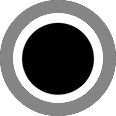settings
And Then There Were None vocabulary
6 drugs or drug ingredient vocabulary words
help & settings
[x]
-
amyl nitrite
-
► definition
Definition:[a substance] known to many as a medicine for heart disease. It is applied by inhaling its odor--a style of very much rarefied application. Fill a tube with its vapor. It is invisible as ordinary air in daylight. But pour a beam of direct sunlight from end to end along its major axis. A dense cloud forms along the path of the sunbeam;Henry White Warren. Among the Forces (1898)---a chemical compound with the formula C5H11ONO. A variety of isomers are known, but they all feature an amyl group attached to the nitrite functional group. [...]It was first documented in 1844 and came into medical use in 1867.Uses:* employed medically to treat heart diseases as well as angina.* sometimes used as an antidote for cyanide poisoning. It can act as an oxidant, to induce the formation of methemoglobin. Methemoglobin in turn can sequester cyanide as cyanomethemoglobin.* as a cleaning agent and solvent in industrial and household applications. It replaced dichlorodifluoromethane, an industrial chemical universally banned in 1996 due to damage to the ozone layer, [...]* recreationally as an inhalant drug that induces a brief euphoric state, and when combined with other intoxicant stimulant drugs such as cocaine or MDMA, the euphoric state intensifies and is prolonged. Once some stimulative drugs wear off, a common side effect is a period of depression or anxiety, colloquially called a "come down"; amyl nitrite is sometimes used to combat these negative after-effects.text from Wikipedia, licensed under Creative Commons - Attribution - Sharealike
► uses
Uses:
"[...] I don't need to go into medical details, but in a certain form of cardiac trouble, amyl nitirite is used. When an attack comes on an ampoule of amyl nitrite is broken and it is inhaled. If amyl nitrite were withheld—well, the consequences might easily be fatal."
Agatha Christie. And Then There Were None. p.76 (1939)

